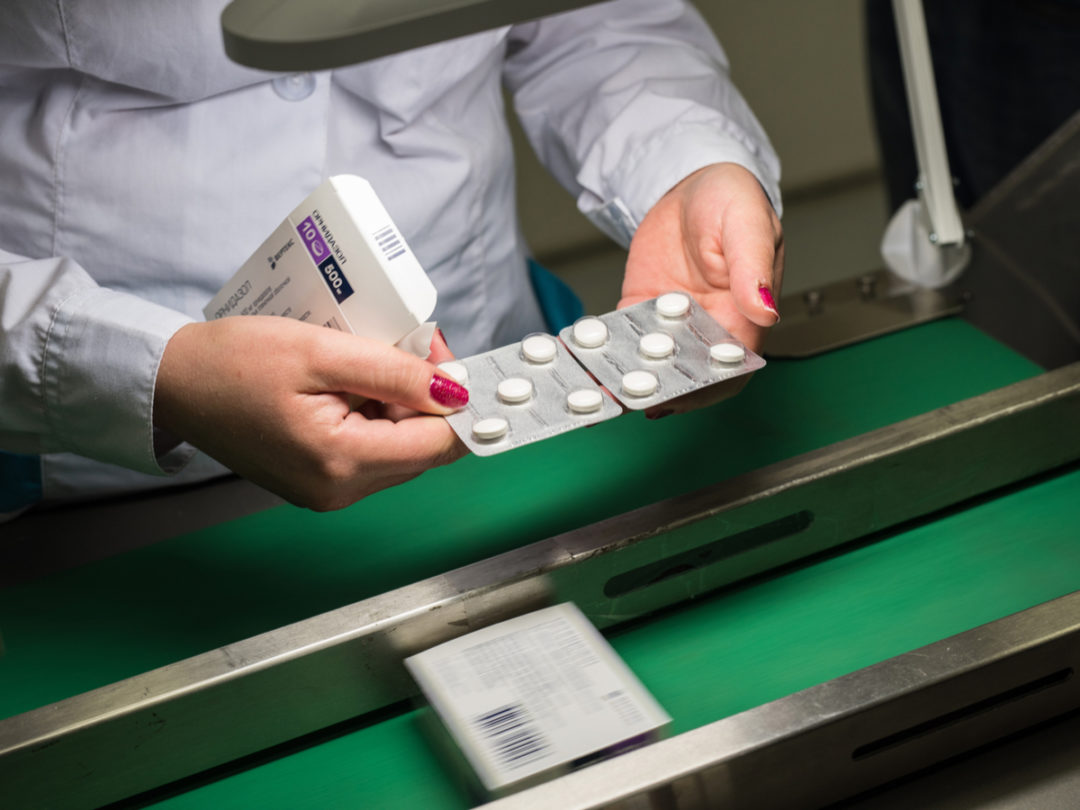
Visit Our Sponsors |
|
|
|
|
|
|
|
|
|
|
|
|
|
|
|
|
|
|
|
|
|
|
|
|
|
|
|
|
|
|
|
|
|
|
|
|
|
|
|
|
|
|
|
|
|
|
|
|
|
|
|
|
|
|
|
|
|
|
|
|
|
|
|
|
|
|
|
|

Regulators want to reduce U.S. dependence on foreign-made pharmaceutical ingredients, as a wave of recalls has raised questions about the safety of the global drug-supply chain.
The Food and Drug Administration is encouraging drug companies to invest in new production technologies that could help return some manufacturing to U.S. shores. The U.S. is currently home to only about a quarter of global production capacity for active pharmaceutical ingredients, according to Janet Woodcock, the director of the FDA’s Center for Drug Evaluation and Research.
Over the past few decades shifting economic forces have made it more attractive for drugmakers to source the basic building blocks for many widely used drugs overseas. Lower labor costs and lighter regulation, along with pressure to make medications less expensive, have lured pharmaceutical giants to countries like China and India. There, manufacturers churn out a range of active ingredients for pills taken by millions of Americans.
But those changes have also made it harder for regulators to police drug quality. Since last year, drug companies worldwide have been forced to recall or halt sales of popular heart and stomach medicines over concerns about contamination with NDMA, a potential carcinogen. Many of them were made with ingredients produced in China or India.
Woodcock, in prepared testimony for a Congressional hearing last Wednesday into safeguarding the pharmaceutical supply chain, said China is now home to about 13% of the world’s registered makers of active pharmaceutical ingredients. That figure has more than doubled since 2010, she said.
While drugmakers typically don’t disclose where every component in a pill comes from, a recall of contaminated blood-pressure drugs known collectively as sartans has shown many of their active ingredients were produced in Chinese factories. A Bloomberg investigation this year detailed doubts among U.S. officials about the data companies including China’s Zhejiang Huahai Pharmaceutical Co. use to prove their drugs are safe and effective.
China’s increasing share of the pharmaceutical supply chain has alarmed U.S. national-security officials, who fear that unsafe foreign-made drugs could be a threat to the health of U.S. military members.
Shortage Problem
Reliance on foreign materials also leaves the U.S. drug supply vulnerable to shortages, Woodcock said in her prepared testimony.
There’s no way to know whether U.S.-based manufacturers would be able to pick up the slack if China stopped supplying the local market, she said. Earlier this year, U.S. national-security officials said drug companies should be compelled to maintain the necessary infrastructure to make drugs without relying on countries like China.
Production issues and quality problems have already led to shortages of some medications, including the blood-pressure drug valsartan, which has been at the center of the worldwide recalls that began last year.
“FDA has been working diligently in collaboration with industry and other federal agencies to ensure our reliance of foreign manufacturing does not pose a national security risk,” Woodcock said.
During her appearance before the committee, Woodcock noted that the agency had some trouble hiring new inspectors. The committee’s ranking member, Oregon Republican Greg Walden, said that the panel had requested an updated report from the Government Accountability Office on the FDA’s drug-inspection program.
Valisure, a New Haven, Connecticut-based pharmacy that routinely tests medication it receives for dispensing, has found issues with a broad range of drugs, according to testimony submitted to the House panel.
The pharmacy rejects more than 10% of the batches it analyzes due to mislabeled active ingredients or carcinogenic contaminants, among other problems, said David Light, Valisure’s chief executive officer. Light said a complex supply chain has made it hard even for large drugmakers that have rigorous testing in place to police drug quality.
“Even a brand name manufacturer with strong measures of quality control is susceptible to the immense complexities of the global supply of pharmaceutical components, which can be contaminated at any juncture,” said Light.
New Techniques
Woodcock indicated that not all of the recent concerns about contaminated drugs stem from problems with oversight of foreign factories. In the case of stomach drug Zantac and its generic equivalents, she said NDMA had been found in almost all versions of the drug. The agency’s chemists think the carcinogen may be formed in reaction with inactive parts of the pills. She said the FDA is still testing to confirm the source of the problem.
The FDA is encouraging the use of new technologies and manufacturing methods to bolster production of drugs and pharmaceutical ingredients within the U.S., Woodcock said. Among the approaches the FDA is exploring are continuous manufacturing and 3D printing.
Such technologies could help address drug shortages, improve quality and help get medicines to the market faster, Woodcock said. Traditional technology could never produce high enough increases in productivity to offset the lower costs of labor and other advantages currently enjoyed in China, she said.
The agency is also working with the Biomedical Advanced Research and Development Authority to develop miniature, mobile production equipment that will allow companies to make essential drugs in the exact location where they are needed, a technique called “Pharmacy on Demand.” It is also trying to streamline the regulatory process, providing companies with subject matter experts and close coordination with the Office of Regulatory Affairs, she said.
RELATED CONTENT
RELATED VIDEOS
Timely, incisive articles delivered directly to your inbox.

